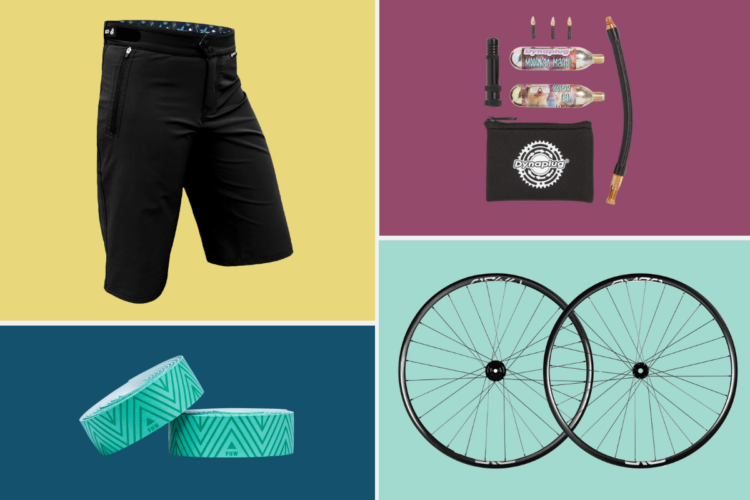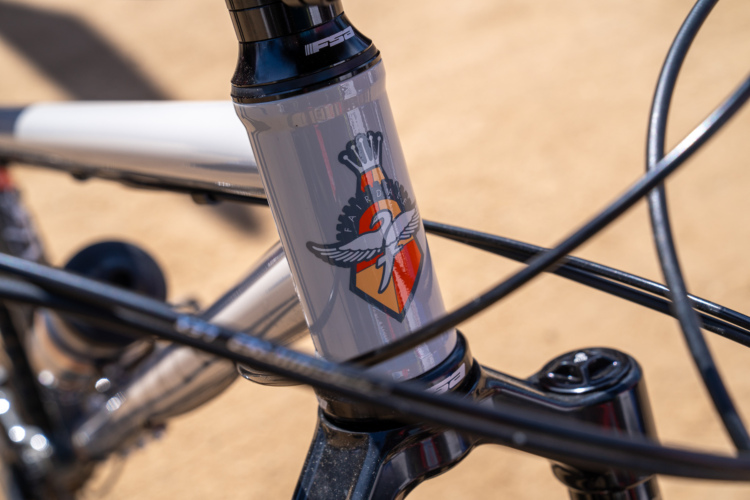Editor’s Note: Greg Heil is a lover of solo backcountry rides, and taking unplanned turns on unmarked trails. While Greg is the Editor in Chief for Singletracks.com, the opinions expressed in this commentary are his alone and do not necessarily represent the opinions of Singletracks.com.
One of the most insidious sociological epidemics sweeping the United States, and really the world, in our day in age is the lack of personal responsibility. These days, whenever something goes wrong, most victims are immediately on the lookout for who to blame. Not only that, but they often look for any angle possible for a lawsuit. Get handicapped in an accident of some sort? Nowadays that’s the ticket to a multi-million dollar settlement and a life of work-free handicapped boredom.
Unfortunately, I’m seeing this same trend creeping into mountain biking as well. Get hurt or get stranded? That can’t be your fault, can it? No, someone else has to be to blame… maybe it’s the trail builder, the forest service for insufficient signing, the map maker, or even the search and rescue team for not getting to you fast enough.
Think I’m making this up? Think again. Here’s a short, not nearly comprehensive list of examples from the news. I don’t give these to speak ill of the injured or the dead, but as evidence that yes, this is a real trend in mountain biking today:
- Mountain Biker dies of exposure while riding in So Cal in one of the worst winter storms of the year, and family blames search and rescue team for not doing enough.
- Mountain biker wins $2.9 million lawsuit against land manager because she crashed into a closed gate and broke her neck.
- Family sues Strava over death of a road biker who died while trying to break a downhill KOM.
- The bike park at Snow Summit was closed due, in part, to a lawsuit from a paralyzed downhill racer, but thankfully it reopened just last year.
Accept the Risks
The fact is, mountain biking is a very dangerous sport. Yes, there are even more dangerous sports out there, but there is nothing safe about hurtling down a mountainside on a narrow 12-inch-wide trail at 20-40 miles per hour while blasting through rock gardens, launching off of drops, and flying around corners above hundred-foot-tall cliffs.

While it’s difficult to find accurate stats about mountain bike injuries that don’t include road bike injuries and deaths (where injuries and deaths from motor vehicle collisions are rampant), there are about half a dozen mountain bike-related deaths in the US every year… not to mention the many hundreds of injuries, some of which are minor, but quite a few of which are major and life-altering, such as paralysis.
I think the first thing we all need to realize is that these risks are an inherent part of mountain biking. If you can’t accept the fact that, on your next ride, you might get injured and might even die, then I don’t think you should swing your leg over that bike and hit the trail. You can try to deny these risks or play them down, but the truth of the matter is they’re an unavoidable part of this sport that we love so much.
Once you accept the risks, you also need to accept that fact that, if you get injured, there is almost assuredly only one person responsible for that: you. You need to take responsibility for every action and decision that you make on the mountain bike trail.
Be Self Sufficient
This is a direct corollary of accepting personal responsibility for your actions, but I’ll lay it out anyway: when you go out into the mountains and hit the trails on your bike, you should be prepared to be completely and 100% self sufficient. And I think that if you aren’t prepared this way, you, again, shouldn’t be mountain biking.
While I think many riders accept the risks of possible injury and death, they often times place a burden on another party too. Often, this is a race organizer, a search and rescue team, or the other people they’re riding with.
Races

In races, I’ve personally observed many competitors who seem to think that it’s the race organizer’s responsibility to have the course so well marked, and have officials at every possible turn, that it’s physically impossible to get lost. But the reality is, that most courses, especially long endurance courses, are too complex for this to be feasible. There’s always a very real chance that you could get lost.
I think an even worse issue is when racers expect that every technical challenge or obstacle should be flagged and marked (this is most pervasive in XC and endurance races). As I was helping crew a race, I once heard a guy who crashed while pre-riding the course complain to the race organizer that a washed out section of doubletrack was too dangerous, and needed to be repaired and have a warning sign placed before it.
Really!? Forgive me, but I thought we were mountain bikers, not couch-riding pansies who live in a protected, allergen-free bubble. You’re having some difficulty on a washed-out road? Here, let me grab my bubble wrap and pad the rocks for you, just in case you crash.
The Backcountry: Search and Rescue
When riding in the backcountry, I think too many riders think that if they get in trouble, they can just call search and rescue to get them out of a jam. While maybe sometimes you can, there is no guarantee that search and rescue will be able to locate and save you: the news article above proves that.
Instead, when you go into the backcountry, you need to be ready for anything. You need to be prepared to self-extract from any place and situation you may find yourself in. Yeah, this isn’t really a popular opinion: most people don’t want to carry the weight of emergency supplies on their bike, and like I mentioned above, they don’t want to accept the risks.
The problem is, anytime you travel into the backcountry, your survival is on you. It’s always on you, whether you recognize it or not. I’m not really sure why I’d need to argue to prove this point, as people die in the backcountry all the time. Anytime you travel there, you could become one of them.

What about group rides?
I’ve covered races and search and rescue above, but I think that too often, when some riders show up for group rides, they expect the other riders to pick up the slack for them. They expect to be shown around the route and waited for at every turn, and oh… I don’t need to bring a tool or a spare tube, I can just bum off of someone else.
To be honest, that’s just stupid. Especially if you’re not great friends with the other people on the ride, in my opinion you should be prepared to be self sufficient. While maybe they’re going to show you trails you’re unfamiliar with, you should still pack a map as a backup, in case you get separated from the group. You should also pack all of the repair tools and parts you need. There’s no guarantee that someone is going to have a 26er tube, 9 speed chain link, or the exact tool you need for your bike. So don’t expect them to: be self sufficient.

The only possible exception to this rule is when you’re riding with a close friend, and you’re planning to ride together. Then sure, it’s ok to depend on each other for navigation, and even for spares if you decide to split up the supplies between the two of you. But even then, you can’t always expect to rely on that other person. What happens if they crash and become incapacitated? You need to be ready for that eventuality.
Resources for Mitigating the Risks and Being Self Sufficient
While I think riders must be willing to accept the risks and be self sufficient when riding a mountain bike, the risks and the potential troubles don’t need to be debilitating. The good news is there are steps that can be taken to mitigate the risks. Here on Singletracks, we’ve published numerous resources to help prepare folks for riding in the wilderness:
- Emergency Prep for Mountain Biking
- High Altitude Mountain Biking: Risk and Reward
- All of the great articles on our Mountain Biking for Beginners Channel
Also, I think there are a number of random tips that aren’t as much about equipment as they are about attitude, that can help get you out alive. Here are some of my favorites:
- Start small. If you’re not willing to accept the high level of risks that big mountain rides require, start small by doing short loops close to the vehicle or riding less technical suburban trails, and then work up from there. Don’t jump into something and get in over your head; work up to it.
- Ride smart. If you’re in the wilderness, 30 miles from the nearest road, it’s not the time to try that 5-foot drop if you’re not already comfortable with that sort of obstacle. It’s so much smarter to check your ego at the door and walk the drop, so you can live to ride another day.
- Be prepared to spend the night. While I might not pack as much gear as MarcS mentions in his article, when I’m riding in the mountains, I try to pack enough gear that I’ll be able to spend the night in the wilderness. I might be uncomfortable and I might be hungry, but with water purification, a lighter, a rain jacket, a head lamp, and maybe some extra layers, I know I can survive in the wilderness if I get hopelessly lost.
- Be in good shape. Sometimes when you’re riding in the Rockies, one wrong turn could inadvertently drop you down the wrong side of the mountains into a completely isolated drainage, suddenly tens of miles and thousands of feet of climbing away from where you need to be. If you’re already straining at the ends of your physical fitness when you make that turn, your body just might not be capable of compensating for that error. Similarly, there are plenty of mechanical issues that can cripple your mountain bike that you can’t plan for in advance. If you know that you’re capable of walking 10-20 miles out of the wilderness if and when something goes wrong (because it will eventually), that provides incredible peace of mind.
- Be willing to change your plans. If darkness falls faster than you expected, if you take a wrong turn, or if a storm moves in on top of you, be willing and prepared to change your plans. Maybe that means you have to bail off of a sweet section of singletrack and take a gravel road down. While it might not be the most fun, again, it’s always better to live to ride another day.
Conclusion
Mountain biking was founded by a group of pioneers who chose to challenge themselves by riding gnarly trails high in the mountains on two-wheeled contraptions ill-fitted for the purpose. This sport is rooted in the principles and ideals of personal responsibility and self sufficiency, and for good reason: if you don’t take these ideals to heart, you could end up seriously injured or dead. If you can’t accept that, you’d better quit mountain biking.




















